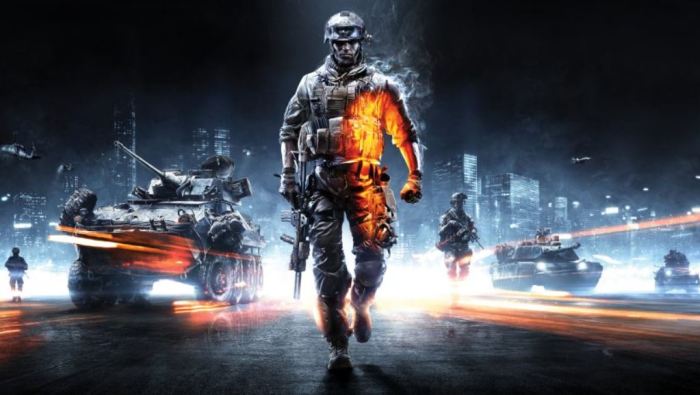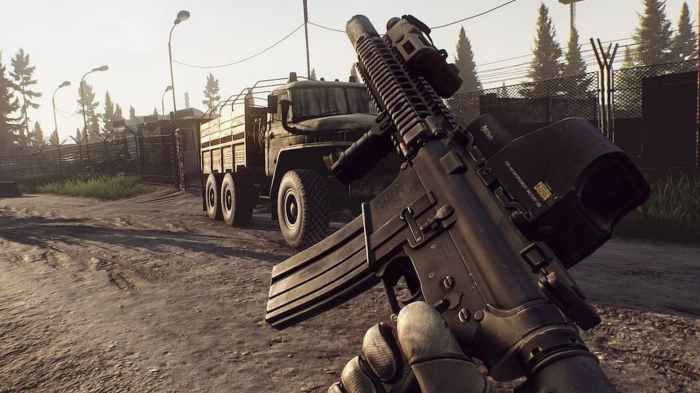FPS esports games are exploding! From the pixelated battles of the early days to the hyper-competitive arenas of today, the world of first-person shooter esports has undergone a massive transformation. Think insane reflexes, nail-biting strategies, and massive prize pools – we’re talking serious dedication and skill. This exploration dives into the heart of this electrifying world, examining everything from the evolution of popular titles to the future of the industry.
We’ll break down the mechanics that make these games tick, the organizations that fuel the competition, and the players who dedicate their lives to mastering the craft. Get ready to explore the strategies, the rivalries, and the sheer adrenaline-pumping action that defines the FPS esports scene. We’ll also look at the tech driving it all, the passionate communities that support it, and where it might all be headed.
Game Mechanics and Competitive Strategies

Competitive FPS esports thrives on a complex interplay of precise mechanics and strategic thinking. Understanding the core mechanics of each game is crucial, but equally important is the ability to adapt and utilize those mechanics within a larger strategic framework tailored to the specific title. This involves mastering individual skills while simultaneously coordinating with a team to achieve victory.
The core game mechanics driving competitive play vary significantly across popular FPS esports titles. In Valorant, precise aiming, agent ability usage, and map control are paramount. Counter-Strike: Global Offensive (CS:GO) emphasizes economy management, tactical positioning, and precise execution of coordinated pushes and defensive strategies. Overwatch 2 focuses on team composition, ultimate ability synergy, and fast-paced objective control. Finally, Call of Duty, particularly in its competitive modes, prioritizes fast reflexes, map awareness, and aggressive engagements.
While each game requires skillful aiming, the strategic depth and approaches differ significantly.
Competitive Strategies in Valorant, CS:GO, and Overwatch 2
Comparing the competitive strategies across these three games reveals interesting differences in gameplay philosophy and team dynamics. While individual skill is important in all three, the emphasis on teamwork and strategic planning varies considerably.
- Valorant: Emphasizes strategic map control through agent abilities and precise execution of coordinated pushes. Team composition is crucial, balancing duelists for entry fragging, controllers for map control, and sentinels for defensive capabilities. Economic management is less critical than in CS:GO, though efficient purchasing remains important.
- CS:GO: Revolves around economy management, strategic map positioning, and precise execution of coordinated maneuvers. Teams often utilize intricate strategies based on economic advantages, map knowledge, and the ability to predict opponent movements. Individual skill is paramount, but coordinated teamwork is essential for success. Round-to-round planning is vital.
- Overwatch 2: Focuses on team composition and synergy between heroes’ abilities. Understanding ultimate ability timing and coordination is critical, as is quickly adapting to changing team compositions and opponent strategies. Effective communication and flexible team strategies are essential.
The Role of Teamwork and Individual Skill
The balance between teamwork and individual skill varies depending on the specific game, but both are undeniably crucial for success in FPS esports. While individual mechanical skill provides the foundation for success, true mastery lies in the ability to integrate those skills into a cohesive team strategy.
In games like Overwatch 2, teamwork is paramount. A team with exceptional individual players but poor coordination will likely lose to a team with slightly less skilled players who exhibit superior teamwork and synergy. Conversely, in games like CS:GO, while teamwork is essential for coordinating pushes and executing strategies, exceptional individual skill can still carry a team through difficult rounds.
The ideal scenario, however, always involves a strong blend of both. Consider a scenario where a Valorant team has a player with exceptional aim (individual skill), but the team fails to capitalize on their entry frags due to poor coordination and map control (lack of teamwork). The team’s potential would be significantly hindered.
Tournament Structure and Formats

So, you’ve got your awesome new FPS game, and you want to make it big in esports. That means you need a killer tournament structure to keep players engaged and viewers hooked. Think of it like this: the tournament format is the engine that drives the entire competitive scene. Get it wrong, and you’ll have a sputtering, underwhelming spectacle.
Get it right, and you’ve got a recipe for legendary moments and a thriving community.The structure of a major FPS esports tournament is typically multi-staged, progressing from open qualifiers to regional playoffs, culminating in a grand final. This allows for a wide range of players to participate while ensuring that only the best compete at the highest level. The format within each stage can vary, influencing the overall competitive landscape.
Tournament Formats
Different tournament formats offer unique challenges and advantages. The choice of format significantly impacts the pacing of the competition, the level of strategic depth required, and the overall viewer experience. Choosing the right format depends heavily on the specific game, the skill level of the participants, and the desired level of viewer engagement.
- Single Elimination: A classic format where a single loss eliminates a team. It’s fast-paced and dramatic, creating high stakes for every match. However, a single bad game can knock out even the most skilled team, leading to potentially undeserved eliminations.
- Double Elimination: Teams get a second chance after their first loss, competing in a losers’ bracket. This offers more opportunities for teams to showcase their skill and recover from early setbacks. It’s more forgiving but can lead to longer tournaments.
- Round Robin: Every team plays every other team once (or multiple times). This format provides a more comprehensive evaluation of team skill, but it requires a significantly longer tournament duration, making it less suitable for large player pools.
- Swiss System: Teams are paired based on their win-loss record. It balances the benefits of round-robin and single elimination, offering a fairer system than single elimination while being more time-efficient than round robin. It’s often used in larger tournaments.
Advantages and Disadvantages of Tournament Formats
Choosing the right format involves weighing the pros and cons. For instance, a single-elimination bracket is great for creating intense, high-stakes matches, but it’s unforgiving. A double-elimination format provides a safety net, but it can drag on. A round-robin offers comprehensive data but demands a lot of time. The Swiss system offers a compelling middle ground.
Each format caters to different needs and priorities.
Hypothetical Tournament Structure for a New FPS Game: “Project Nova”
Let’s say we’re launching “Project Nova,” a futuristic FPS with a focus on strategic team play. Our tournament structure will be designed to maximize viewership and showcase the game’s unique mechanics. Stages:
- Open Qualifiers (Online): A multi-day open qualifier utilizing a Swiss system. The top 64 teams advance to the regional playoffs.
- Regional Playoffs (Online): Four regional playoffs (North America, Europe, Asia, and Oceania) will be held, each using a double-elimination format. The top 8 teams from each region advance to the Global Championship.
- Global Championship (Offline): The 32 teams that qualified from the regional playoffs will compete in a double-elimination format culminating in a grand final. This offline event will be held in a major esports arena, providing a spectacular setting for the championship matches.
Qualification Process: Teams can register for the open qualifiers through an online portal. There will be a set registration period, and teams will be required to meet certain criteria (e.g., minimum player count, minimum age). The use of a Swiss system in the open qualifiers ensures a fair and efficient selection process, allowing for a wide range of teams to compete.
The Future of FPS Esports

The future of FPS esports is a dynamic landscape, poised for significant growth and transformation. Technological advancements, evolving player bases, and shifts in the business models are all contributing to a rapidly changing competitive scene. Predicting the exact trajectory is challenging, but analyzing current trends allows us to envision several plausible scenarios for the next five years.
The industry faces both exciting opportunities and significant hurdles. Maintaining player engagement, adapting to new technologies, and navigating the complexities of a global market are key challenges. However, the potential for expansion into new territories, the rise of innovative game mechanics, and the increasing accessibility of esports all represent substantial growth opportunities.
New Game Technologies and Their Impact
The integration of new technologies will fundamentally reshape the FPS esports landscape. Virtual Reality (VR) and Augmented Reality (AR) offer immersive experiences that could revolutionize gameplay and spectator engagement. Imagine VR tournaments where viewers feel like they’re right in the arena, experiencing the tension and excitement firsthand. AR overlays could provide real-time game statistics and player information directly onto the viewer’s screen, enhancing the viewing experience.
Furthermore, advancements in AI could lead to more sophisticated opponent AI in training modes, allowing players to hone their skills against increasingly challenging adversaries. This could also lead to the development of personalized training regimens based on individual player weaknesses and strengths. For example, a system could identify a player’s tendency to over-peek and subsequently provide tailored practice scenarios to address this issue.
Challenges and Opportunities in the Global Market, FPS esports games
The global nature of FPS esports presents both challenges and opportunities. Expanding into new markets requires overcoming cultural and linguistic barriers, adapting to regional preferences, and ensuring fair and accessible competition. However, tapping into untapped player bases in developing countries represents a significant opportunity for growth. For instance, the rapid growth of mobile gaming in regions like Southeast Asia and India presents a fertile ground for mobile FPS esports to flourish.
This would require developing games specifically optimized for mobile devices and creating supportive infrastructure to facilitate tournaments and community building. Conversely, maintaining a level playing field across different regions with varying internet infrastructure presents a major challenge.
Growth Scenarios for the Next Five Years
Several scenarios are plausible for the growth and evolution of FPS esports over the next five years. One scenario envisions a continued dominance of established titles like
Counter-Strike
Global Offensive* andValorant*, with new entrants struggling to gain significant traction. This scenario might be driven by strong community engagement and established tournament structures around these games. Alternatively, a more disruptive scenario might see the emergence of a new, highly innovative FPS title that rapidly captures market share, potentially displacing existing giants. This could be a game leveraging new technologies, such as VR or advanced AI, or one featuring revolutionary gameplay mechanics that appeal to a broader audience.
Finally, a third scenario sees a diversification of the FPS esports market, with a wider range of titles coexisting and catering to different player preferences and skill levels. This scenario might be facilitated by the rise of smaller, niche tournaments and community-driven leagues. The success of each scenario will depend on a variety of factors, including technological advancements, marketing strategies, and the overall evolution of the gaming industry.
Popular Questions: FPS Esports Games
What’s the average salary of a professional FPS esports player?
Salaries vary wildly, from a few thousand dollars a year to six figures or more for top players on successful teams, depending on skill, team success, and sponsorships.
How do I get started in competitive FPS gaming?
Start by mastering a game, practicing consistently, finding a team, and participating in online and local tournaments. Building a strong online presence and showcasing your skills is also key.
What are some common injuries among professional FPS players?
Repetitive strain injuries like carpal tunnel syndrome, eye strain, and back problems from prolonged sitting are common. Professional players often incorporate physical therapy and ergonomic setups to mitigate these risks.
How are cheaters dealt with in FPS esports?
Games employ anti-cheat software, and tournament organizers have strict rules and penalties, ranging from bans to prize forfeiture, for those caught cheating.
